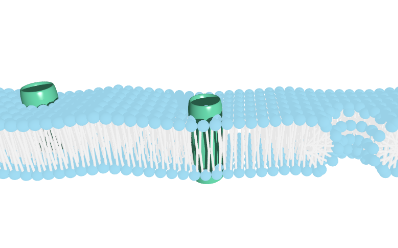Institut Charles Sadron News

Publié le 19/05/2023 par Muller Pierre
Electrical fields are able to generate holes across biomembranes, but how?
Electroporation is a well-established technique that allows to overcome the cellular membrane. A short electrical pulse opens holes in the membranes, allowing the delivery of differents substances into cells : drugs, DNA or other biomolecules. But this technique, which represents a market of several billions dollars, relies astonishingly on only little fundamental knowledge.
In an article recently published in the PNAS journal, Eulalie Lafarge, who recently defended her PhD in the MCube team, Carlos Marques, André Schroder, Pierre Muller with collaborators from the university of Freigburg in Brisgau (in Germany) present a large amount of new data concerning the influence of the electrical field on the formation of pores in lipidic membranes. These results show that existing models of pore formation are not complatible with these data and suggest possible reasons for the pore formation.

Lipidic membranes are about 5 nanometer thick two-dimensional self-assemblies of amphiphilic molecules, i. e. molecules which like both water and oil. They form inner and outer walls of living cells, leading to the organization of cellular compartments, the control of matter exchange, signal transmission, and many other processes vital to living organisms. Biomembranes are very efficient flux controllers: they allow the easy exchange of water molecules, but are excellent barriers for most water soluble molecules. This barrier is lifted by the application of electrical pulses. The data show a divergence compared to predictions of the classical pore formation model in the frequency of pore formation dependency on the electrical field. This frequency is measured by counting the number of pores openings per second while the field is applied. The existing models do not explain a increase of the frequency with the electrical field. The hypotheses of the models are wrong and need to be revised. The frequency of pore formation depends on the energy required to open the pore. Without applied field, this energy is too high, and no pores open. Increasing electrical field lead to a reduction of the energy required, and pores spontaneous open. We still do not understand how the electrical field reduces the energy of pore formation. In existing models, the effect is explained by a compression of the membranes induced by the electrical field, leading to a facilitation of pore opening. But such an effect predicts a quadratic lowering of the required energy with the field applied: doubling the field intensity should multiply by four the reduction, in contradiction with the observed variation. Indeed, the results show a linear decrease of the formation energy with the electrical field: doubling the field intensity leads to a doubling of the energy decrease. Such a dependency suggests a different effect of the electrical field: by pivoting the water molecules closely bound to the bilayer, the electrical field would destabilize the water-membrane interface. This is new ground for theoreticians and simulators, seeking a true explanation of this key phenomenon.